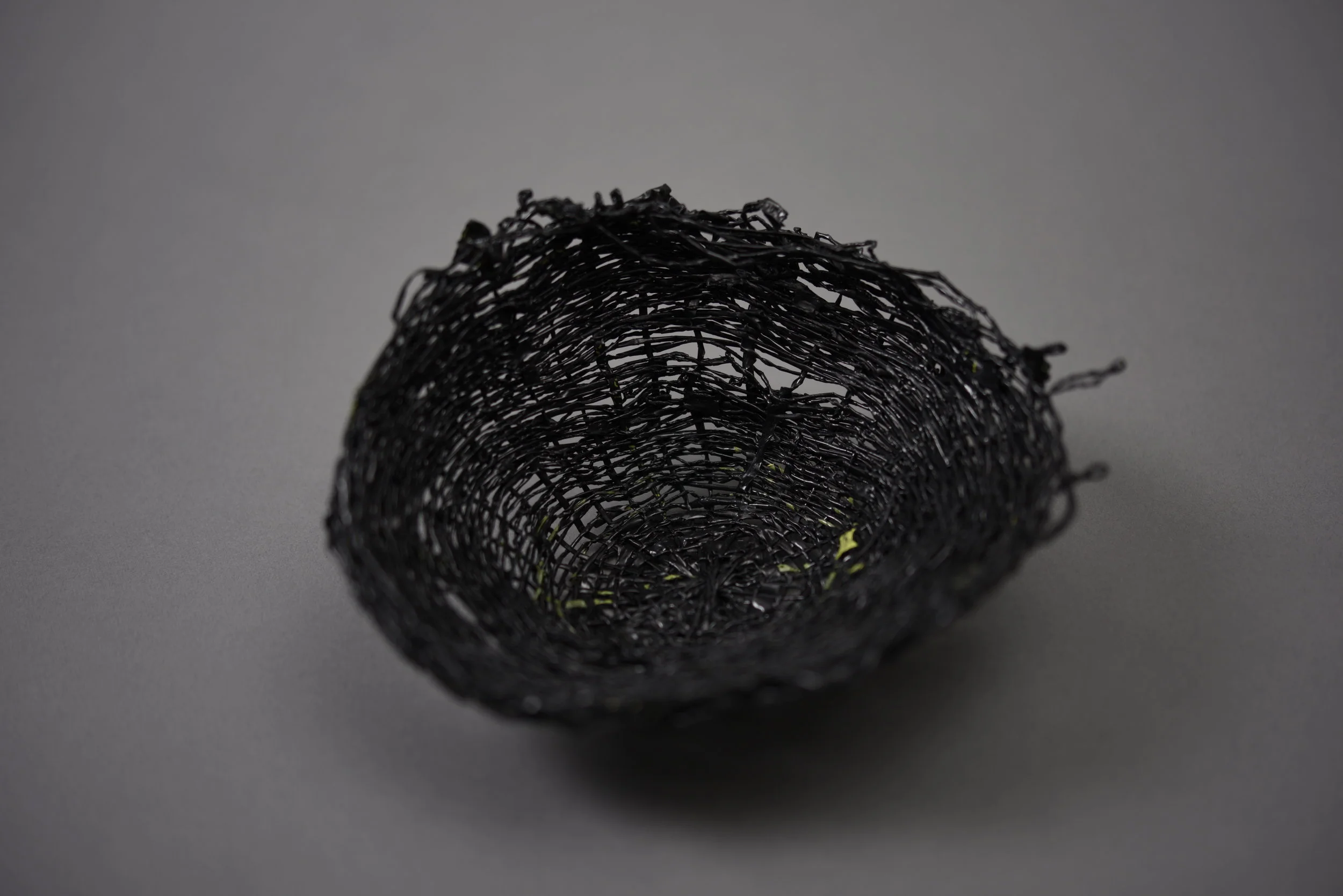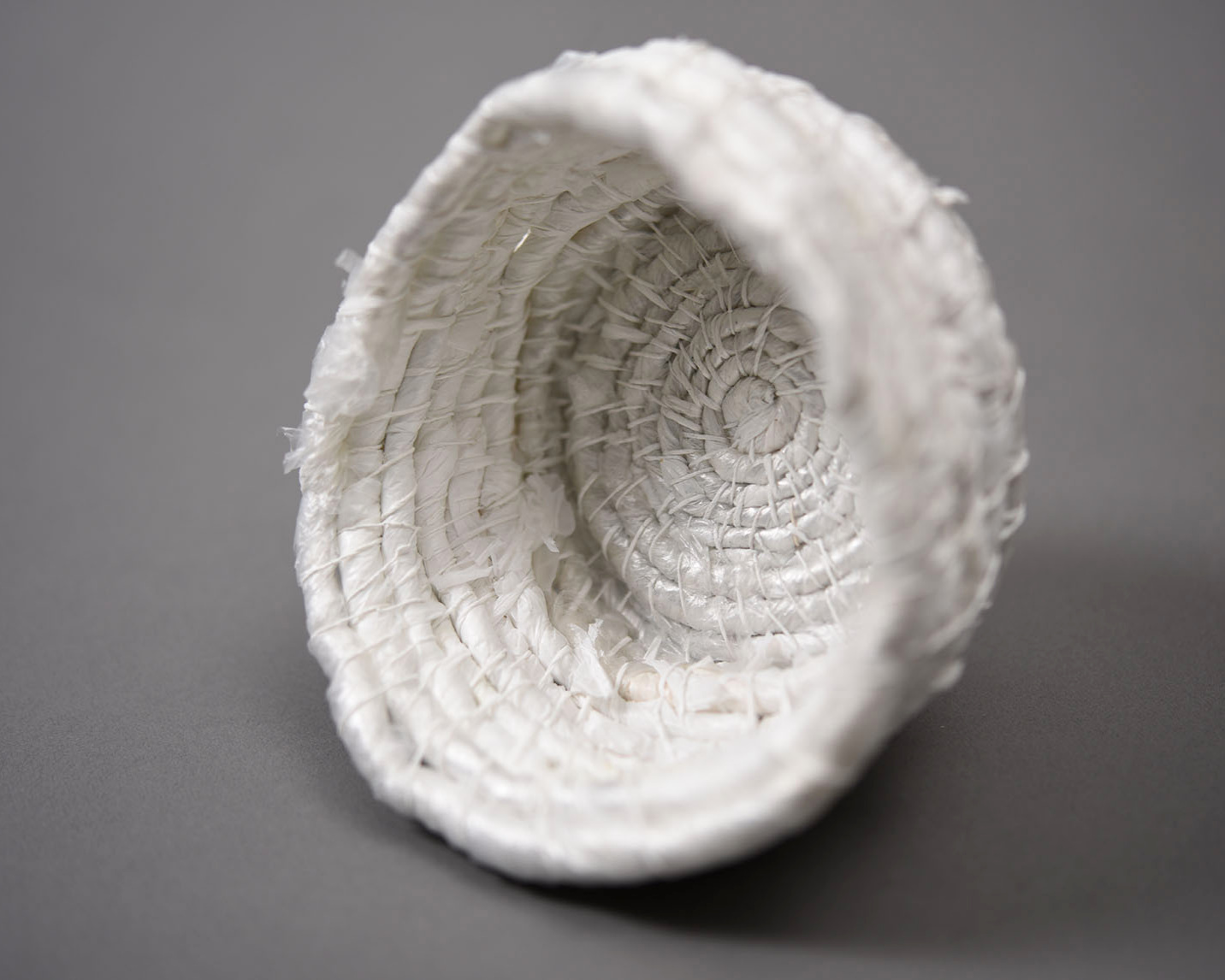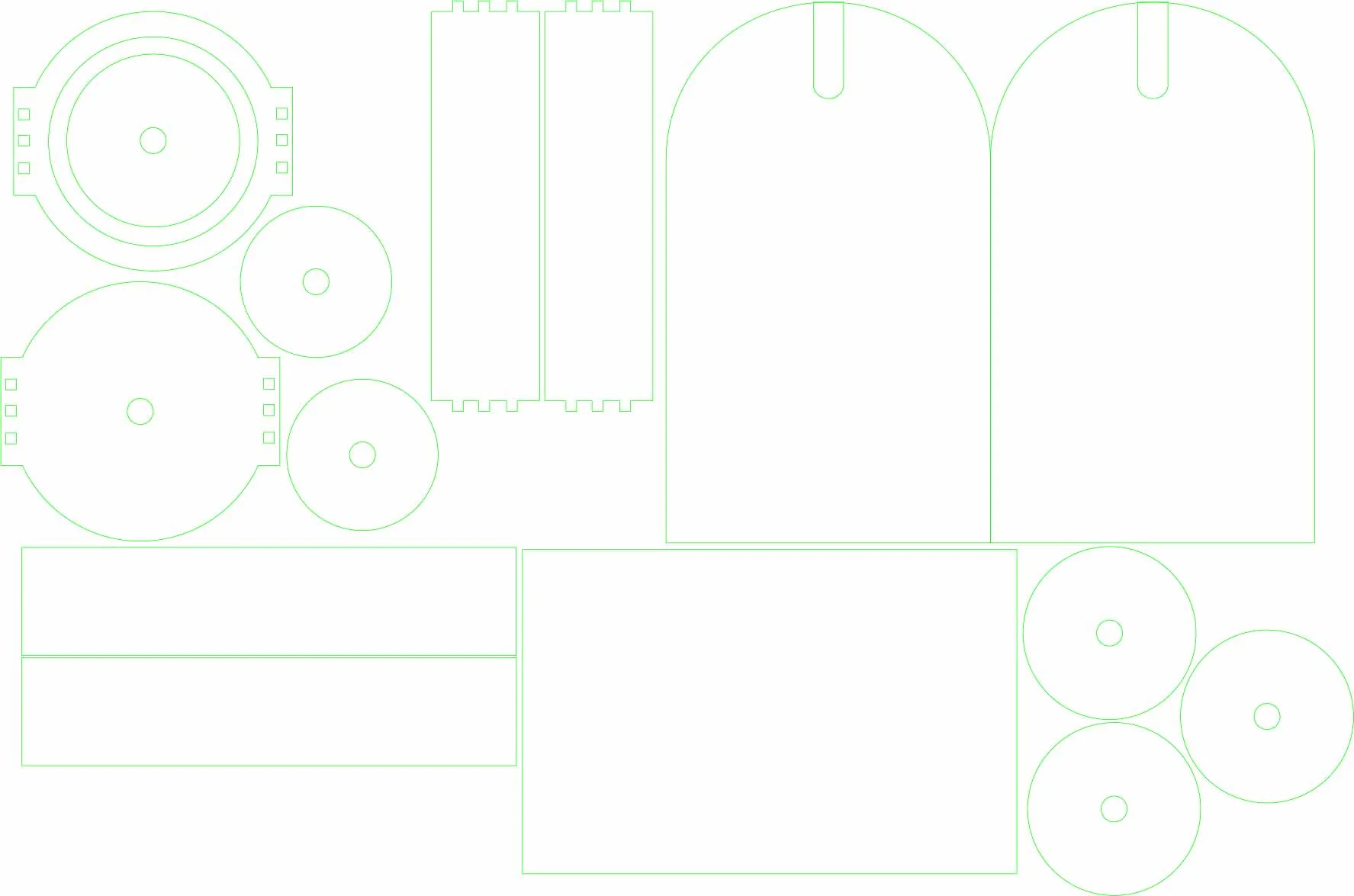
Re-thinking the Life of a Polythene Bag
Re-thinking the Life of a Polythene Bag’ - studies the properties of Polyethylene, the economic implications of the global plastic bag industry and the solutions communities are developing to deal with the environmental issues plastic bags create. Treating the plastic bag as valuable material that has potential above its intended use, the project explores ways waste plastic bags can be recycled to a usable material and diverted from entering the environment. The project explores ways waste plastic bags can be recycled to create a usable material, diverting them from entering the environment.
• Globally, 5 to 13 million tonnes of plastics — 1.5 to 4 % of global plastics production — end up in the oceans every year (see 1).
• In total, it is estimated that between 75 000 and 300 000 tonnes of micro-plastics are released into the environment each year in the EU (see 2).
The growing consumption of ‘single-use’ plastics (packaging or other consumer products that are thrown away after one brief use) contribute to an increasing amount of plastic waste generated each year, around 25.8 million tonnes of plastic waste are generated in Europe every year (see 3). Less than 30% of such waste is collected for recycling (see4). Opportunities and challenges connected to plastic are global, plastic waste originating in one country washes up on the shores of another, plastics value chains are developed across continents and plastic waste is traded internationally: about half of EU plastic waste collected is sent abroad, more than 85% of which is currently exported to China (see 5). Following Chinas ban on imports of certain types of plastic waste the EU has an increasing amount of plastic waste to process locally.
The proposed project aims to interrupt the current life line of Polyethylene, by repurposing it to a usable material, extending its use phase before it enters the recycling process. The spinning machine is adapted from open source blueprints (see 6) allowing this technique to be exported and developed by people all over the world – enabling them to transform their waste into a resource. This method prevents the production of pollutants as well as maintains the materials value, which decreases in monetary and quality terms when melted.
1- Jambeck et al, Plastic waste inputs from land into the ocean, Science, February 2015.
2, 3, 4 - Communication from the commission to the European Parliament, the council the European economic and social committee and the committee of the regions. “A European Strategy for Plastics in a Circular Economy” ( Brussels,16.1.2018)
5 - Global Waste Management Outlook 2015.
6 - Designed by Studio Hilo, Berlin
Studio Hilo Berlin spinning machine blue prints. Get in touch for download version

Machine Parts
For details and the blue prints, get in touch..
A yarn collection was made using a drop spindle, and the electronic spinning machine.


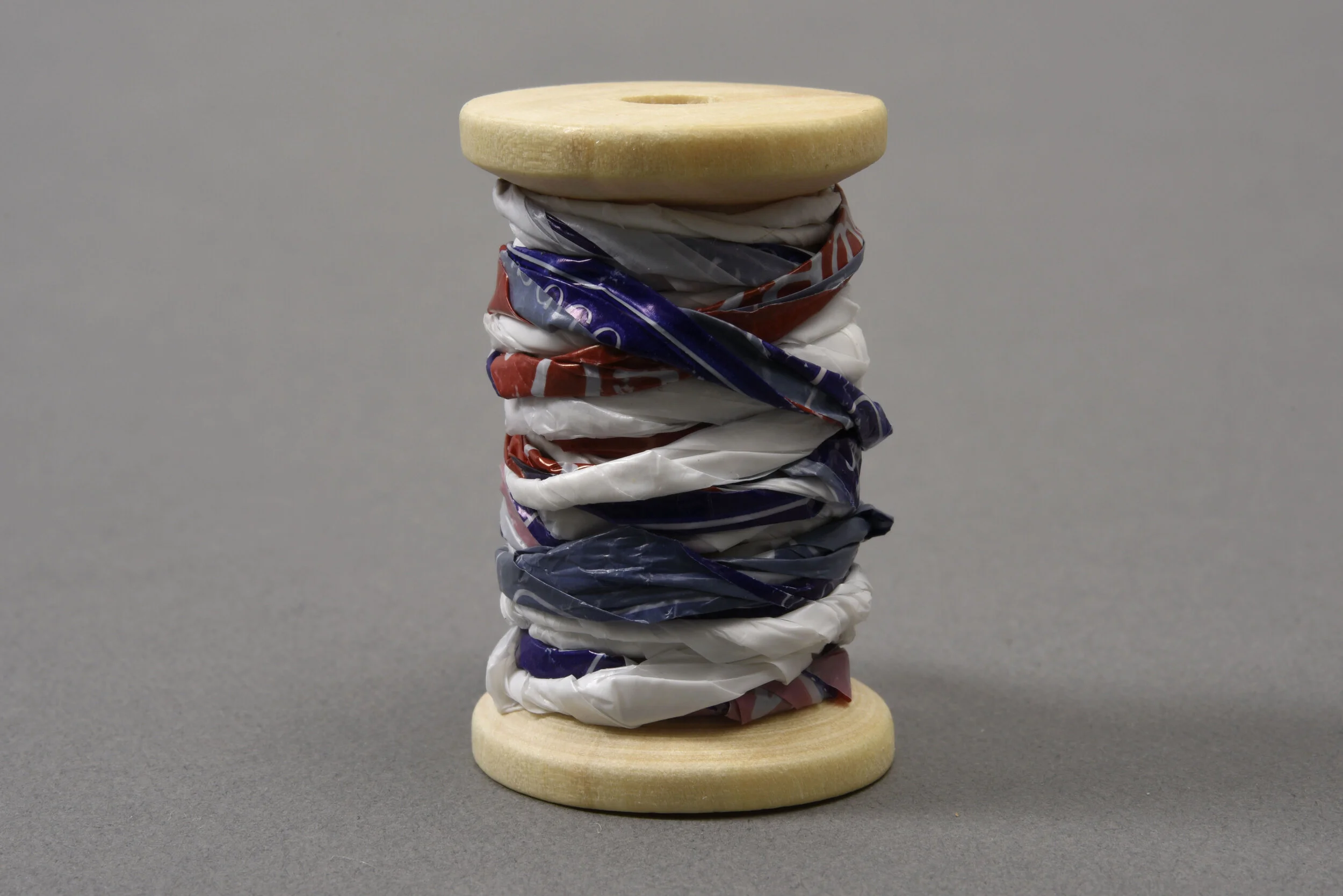
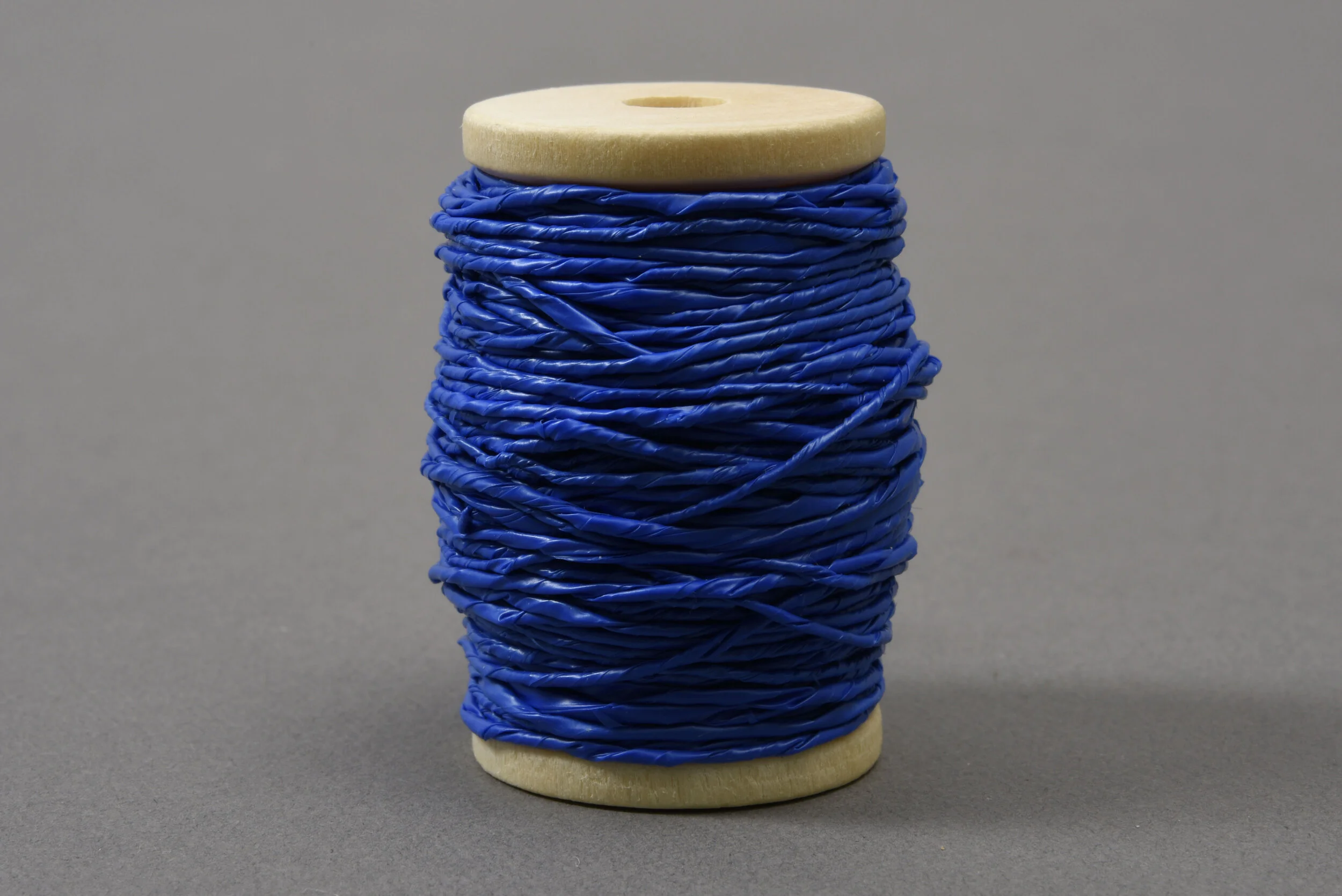
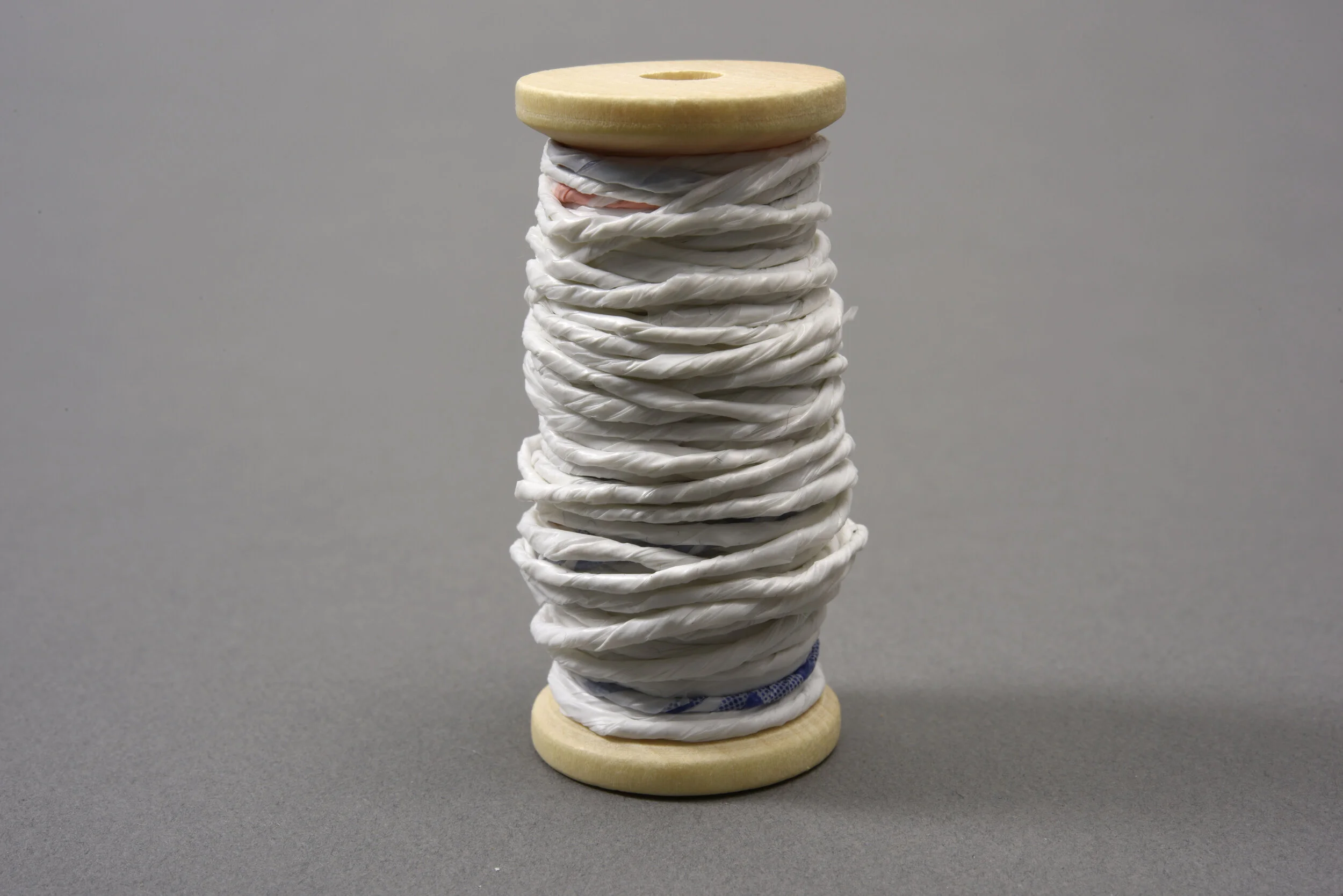
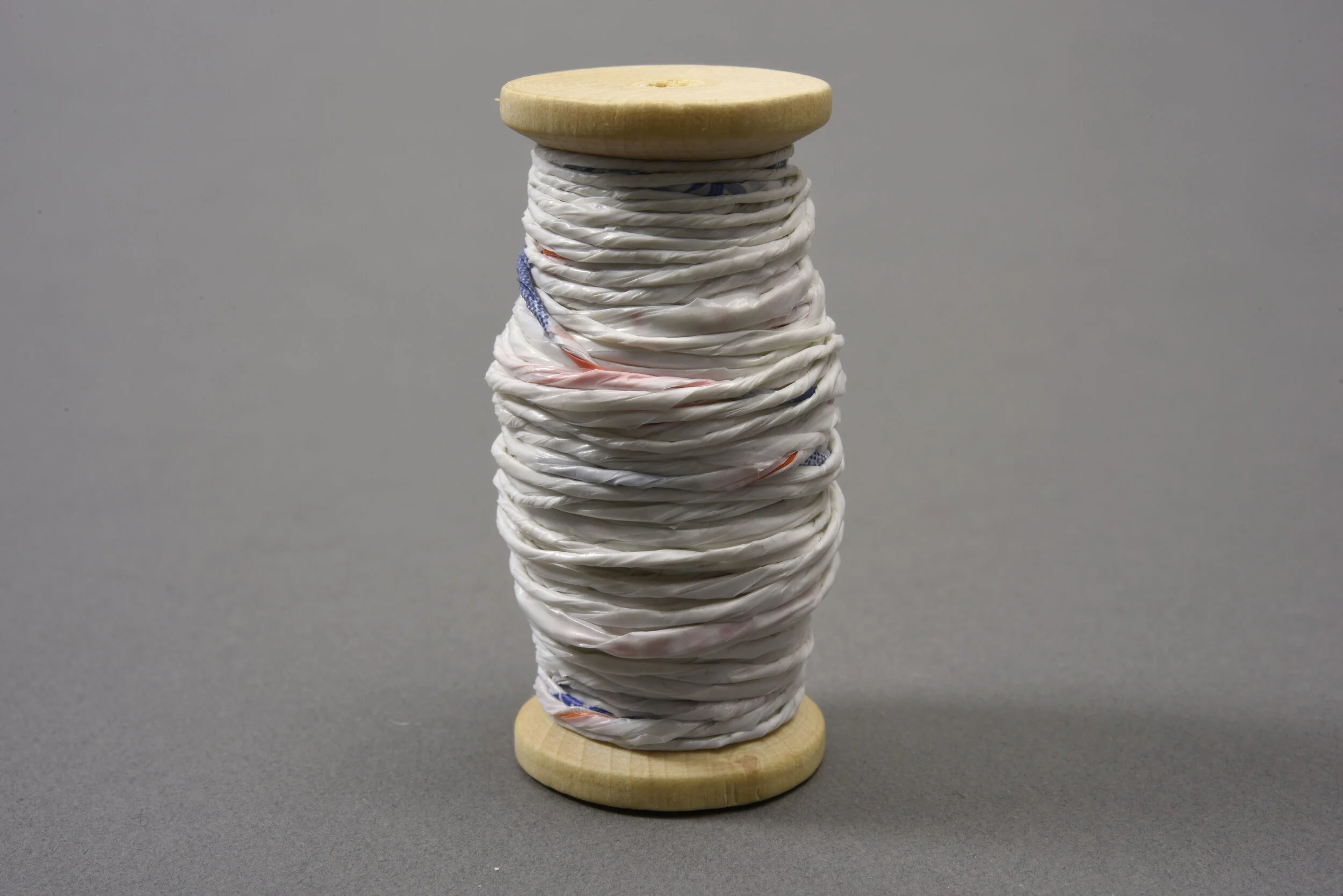
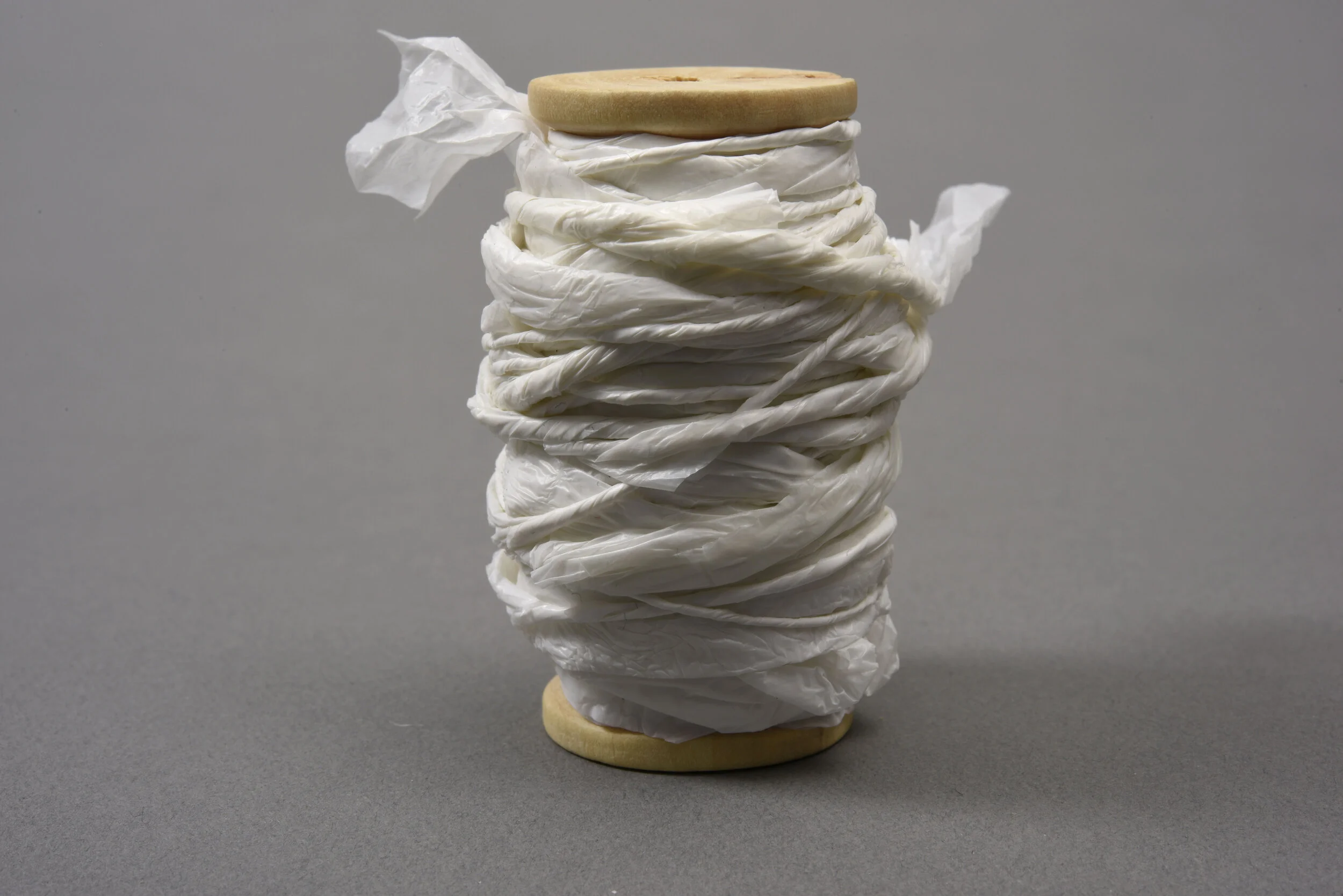
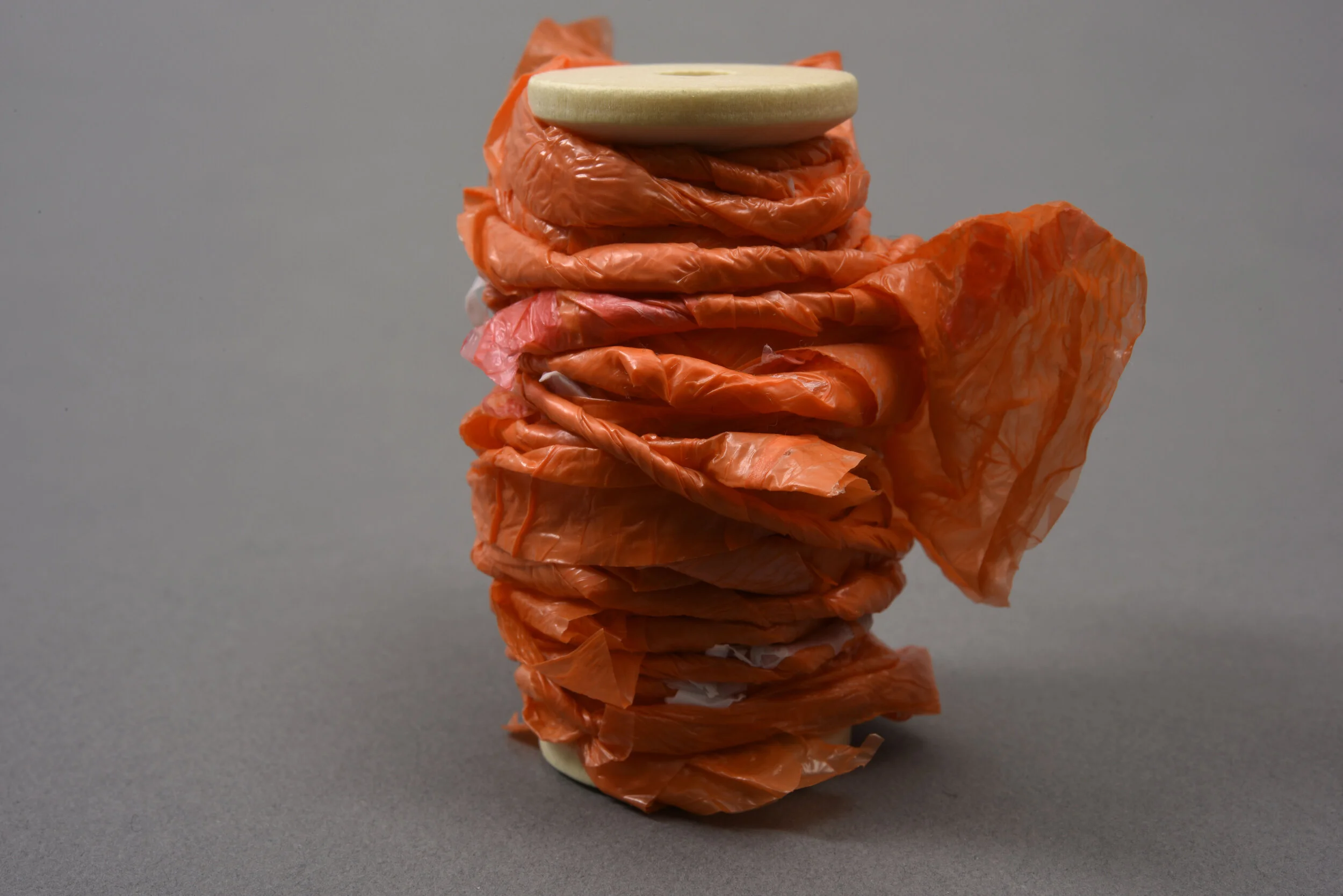
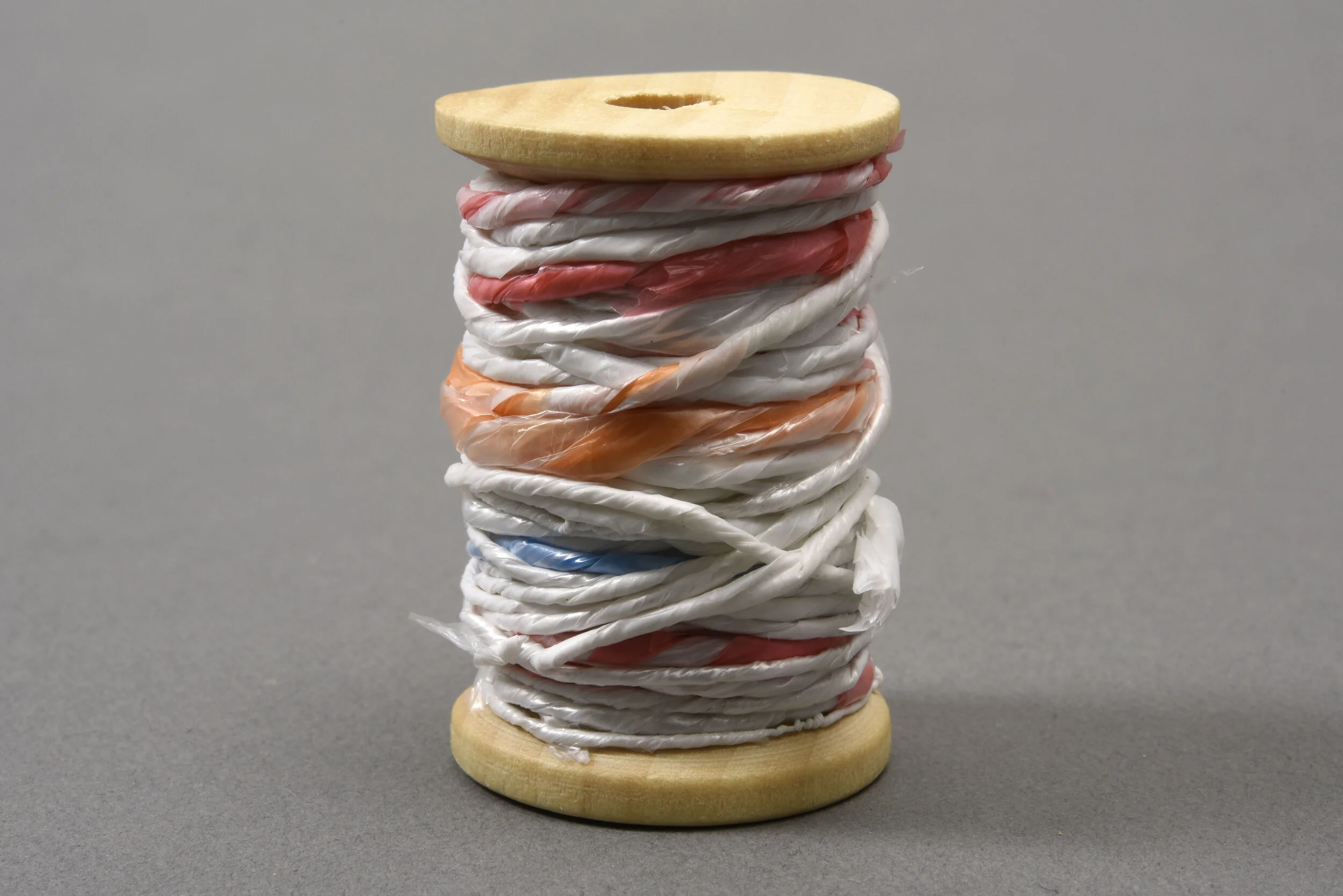

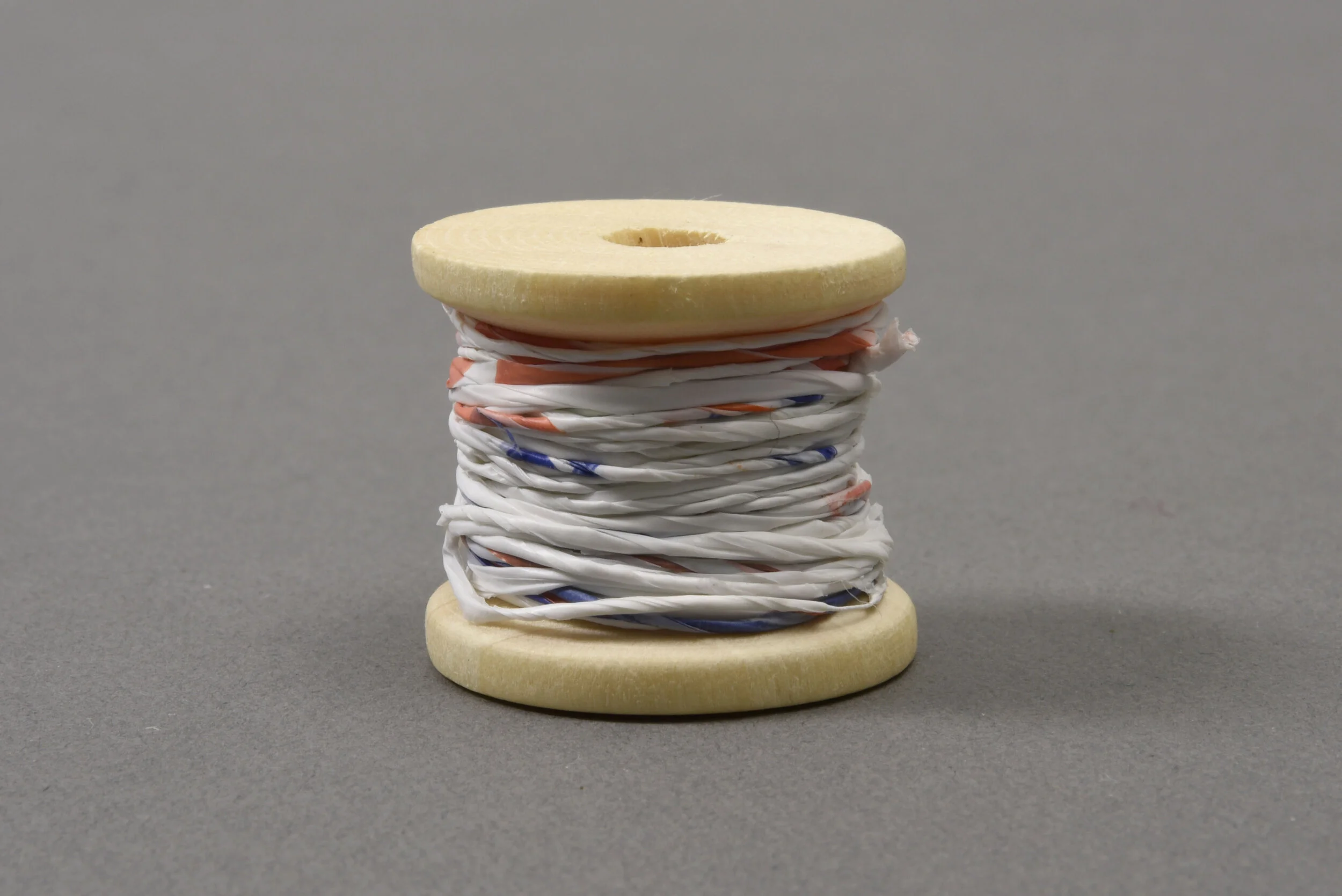






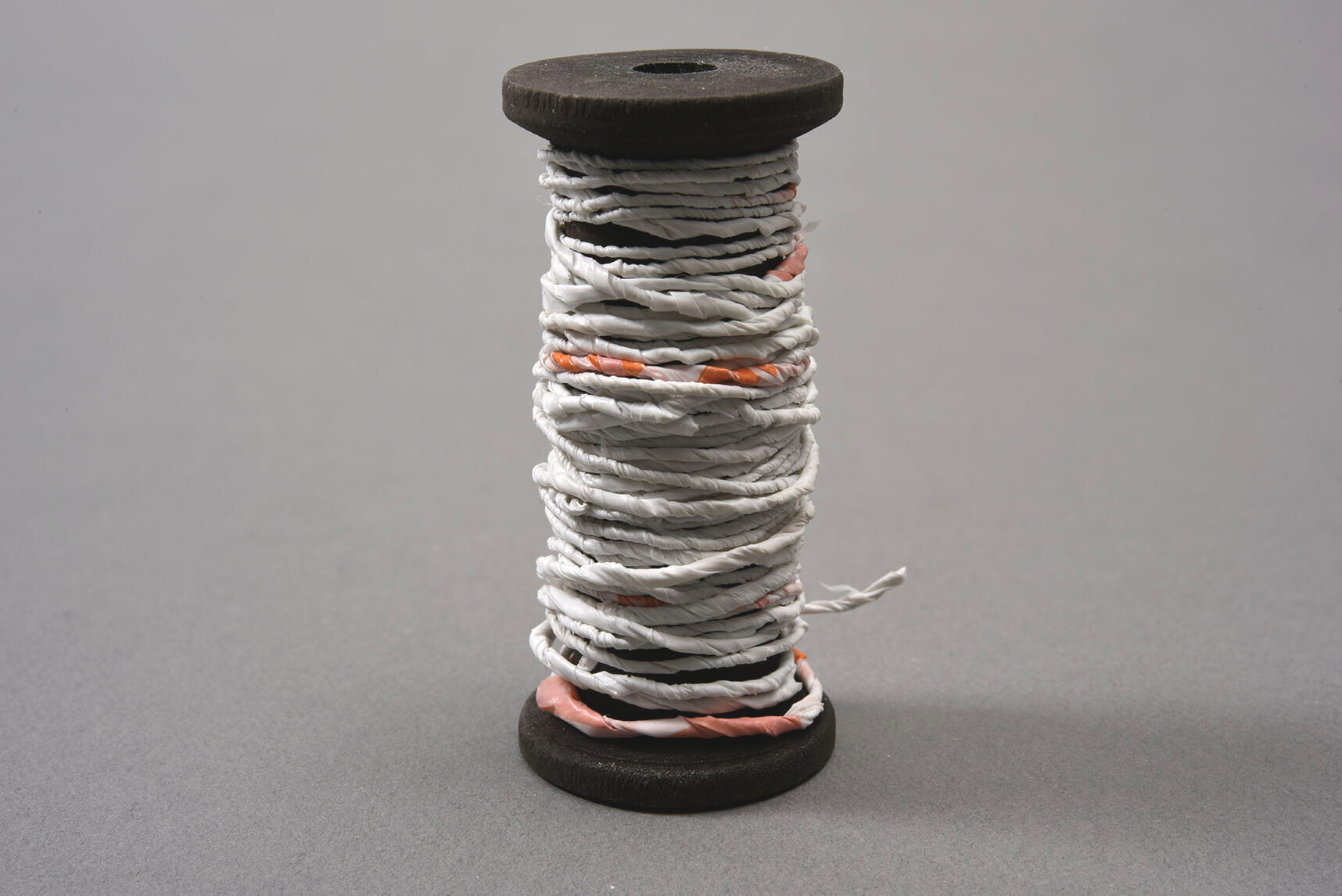






The yarn was used for prototyping textile and basket weaving techniques.





